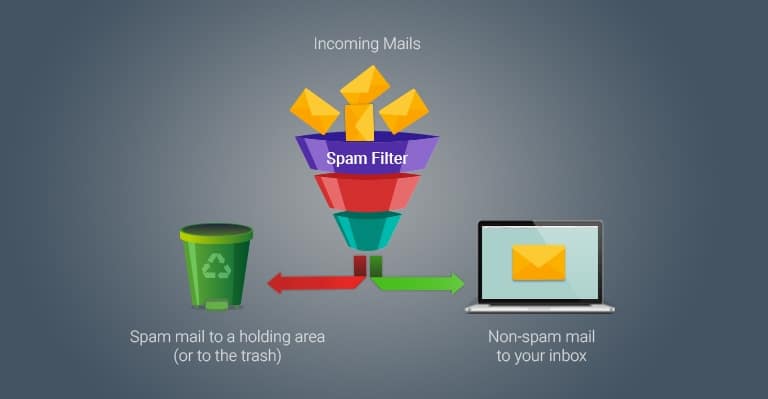The ecommerce industry has grown exponentially, with total ecommerce sales expected to reach $1.065 trillion by 2023. As an ecommerce business owner, you have unique challenges, like unique rules and regulations to follow, and cybersecurity is high-up on the priority list to ensure that most sacred asset data, stored online, is protected.
These challenges you must contend with and know how to overcome. Several business leaders offer their opinions on the most prevalent challenges they all agree they face now.
The immediate ecommerce challenges for SMEs
Cybersecurity
Victor Congionti, chief information officer and co-founder of Proven Data, knows that small ecommerce sites need the proper cybersecurity practices and tools in place.
“Small businesses that focus their attention in the ecommerce space need policies and procedures to create a solid cybersecurity framework for the organisation,” Congionti said. “In the case of a cyberattack, a small business cannot afford to have downtime in operations and sales, because every transaction is a marginal financial success that the business depends on.”
Because a small business depends on that income, business owners need to ensure they have a proper cybersecurity framework to keep data safe and secure while helping employees feel empowered to implement policies and tech to combat cyberattacks. Measures such as tighter access control and data security software can shore up defences against vulnerabilities and improve a small business’s cybersecurity risks.
Businesses must have an incident response plan that establishes what to do in the event of a cyberattack.
In the case of a ransomware attack, the organisation might not be able to access files and data that is necessary for providing service to customers, such as inventory reports. Having a response plan can help the business reduce downtime in operations and continue providing service to clients through other means, such as phone sales.
Competition
Competition comes in many forms for small businesses, especially in the ecommerce space. You have to keep up with competitive pricing, products and services – all competing for your target customer.
As a small business, you can overcome price competition by having a very clear company value proposition that consumers can’t get elsewhere. The ecommerce space has become so saturated that standing out from other ecommerce businesses is challenging, through no fault of your own.
“Distinguishing yourself from your competitors is crucial to standing out and attracting new customers for your business,” said Harsha Reddy, co-founder of Small Biz Genius.
There are many ways this can be accomplished if you know how starting with making sure your website looks professional and is optimised correctly to suit today’s Google Algorithm. Also, by providing a unique product or service, you can focus on a smaller demographic, making it easier for you to increase your domain authority.
For further information take a look at our advanced guide to customer acquisition.
Order fulfilment
Not everything has to fall on the small business owner’s back. You could be inundated with more orders than you are prepared to handle on your own. In this case, outsourcing order fulfilment and ecommerce shipping can ease your workload and streamline the customer experience.
Customer experience
As a primarily ecommerce business or a business that conducts some selling online, you might find it a challenge to offer your customers the same experience level they would get in a brick-and-mortar store.
“One of the most overlooked areas of the customer experience in moving to ecommerce is pricing and customer personalisation,” said George Dunham, CEO of epaCUBE. “Customer experience is especially important when launching an ecommerce initiative because customers expect to be treated as well or better online as they are face to face.” Their perception is that you have had the time and opportunity to go away and carefully prepare what you want to offer them as an individual.
Dunham said that companies struggle to meet these new demands because doing so requires precise handling of pricing, analytics and hyper-personalisation. Successful experiences in the ecommerce space require the same, if not greater, clarity in product offerings, pricing, loyalty programs and more, as is required in a face-to-face buying process.
“In a world where everything is happening online, your customers expect more, and they also know more about your products, prices and competition,” Dunham said. “They expect to be treated the same way online as offline, so if they can get a certain price in person but can’t get that price online, they get frustrated and purchase somewhere else.”
Quality website traffic and visitor conversion
Building, designing, and running an ecommerce website is complex, but generating quality conversions is even more challenging, according to Lisa Chu, owner of Black N Bianco.
“To turn your traffic into converting customers, you must have a website that is modern, clean, user-friendly, trustworthy and virus-free,” Chu said. “Every industry is different, so understanding your audience is crucial to designing a website that resonates with your audience.”
After hyper-personalisation of communication, ensuring effective CRO for your website is one of the primary essential tasks. Maximising the content on your website through SEO is the next step.
Phillip McCluskey, commercial director of One Erth, said that average conversion rates globally are less than 3%, making driving relevant traffic to your site a sticking point.
“Extensive short-tail keyword research should be conducted to ensure you are optimising your pages for relevant search terms,” he said. “Likely, the competition for these terms when they are just starting will not realise immediate web traffic; therefore, long-tail keyword research should be conducted to understand the relevant ‘what,’ ‘how,’ ‘who’ and ‘where’ within your niche.”
Shirley Tan, developer partnership manager at Yahoo Small Business, said many businesses used to take the “if I build my online store, customers will somehow discover it” approach. “Today, that is no longer the case. When there were fewer ecommerce stores, they may have been able to rely on a stumble-upon effect, but now the internet is too crowded and noisy. Therefore, engaging the customer and getting their attention has to be more meaningful and impactful.”
To combat the noisy ecommerce space, Tan said ecommerce SMBs need to understand who they are targeting to create a customer base that will be their constant source of revenue and loyal shoppers.
This feature on customer retention is essential reading.
Return and refund policies
A good return and refund policy could be the difference between success and failure. That sounds extreme, but it’s true.
“If you want your brand to stand tall, then customer satisfaction should be the priority, and whatever you’re selling should be the same as what’s advertised,” said Syed Ali Hasan, digital marketing manager at Film Jackets. See feature the state of brand loyalty.
In an ideal world, yes, there would never be an issue with the product you’re selling, but that’s not always the case. Sometimes the purchaser has buyer’s remorse, or it wasn’t what they thought it would be.
“Be transparent and create a smooth, fast and easy return policy,” Hasan said. “Make it easy to understand and not too strict, so the customer won’t have to go through hassles to return an item.”
Rubright said that if you don’t have a good return and refund policy, people are less likely to trust you’re selling something worth the money. “When a site says ‘no returns or refunds,’ it makes the customer much more likely to think it’s a risky purchase or, worse, a scam since online businesses can be less known.”
Finding the right market
“The first step of any business is to find product-market fit, and ecommerce is no different” Rubright said. “Product-market fit is the degree to which a product satisfies market demand. The easiest way to find that fit quickly is to build a product that solves a problem you have.”
However, finding the right market for your product isn’t the easiest task. Rubright offered some insights on how to make it more straightforward.
“If you haven’t figured out your ideal customer yet, I recommend making some assumptions as to what your target market is and running Facebook ads to this audience. When you finally do make a sale, try and understand everything you can about who bought your product, and find more of those people by any means necessary. Once you have product-market fit figured out, then you can figure out the best way to reach your ideal customers.”
An important supporting article for this feature is available on the value of keeping the right customers.
Making and increasing sales
You are already an ecommerce retailer, the problems infant of are challenges to overcome, not be daunting. Making a sales plan and selling your products and services seems like a no-brainer; however, it’s not always that straightforward.
“To increase sales, ecommerce SMBs need to have the right product at the right price and ensure they are top of mind when the customer is ready to make a purchase,” Tan said. “This traffic can be hard to get; to drive sales, a brand must endear themselves to their customers.”
Aside from customers already having you in mind when they need something and feeling positive about your product, your website plays a big part in how many sales you’ll make.
Treat each customer as an individual, and by this we mean learning what each customer (not a segment) needs, wants and desires. To achieve this high-tech sophistication of your marketing, solutions are available in hyper-personalisation software.
Hyper-personalisation will do it all autonomously for you. Autonomously – no human involvement whatsoever. It cannot allow any human involvement to maintain it as pure and, therefore perpetually accurate. Not only does that maximise the return, but it means it comes without the biggest overhead in marketing – staff.
Simply install it and walk away, you never need to touch it, it is autonomous, and yet be reassured it has your back, more importantly, it offers every consumer exactly what and when they want to see.
Personalisation is identified by every leading research authority to now deliver the highest ROI of all marketing disciplines, so 20x is the commonly quoted distinction. Ignore this at your peril, as your competitors won’t.
If you need to secure higher average order value, perpetuate ever greater customer lifetime value, and kill your rate of return from unwanted goods, personalisation implementation is sacrosanct.
Borderless ecommerce
Because of the increase in ecommerce websites available worldwide, shopping has become borderless. Consumers can easily purchase from companies outside of their own countries. As a result, e-commerce businesses must accommodate customers of all backgrounds. See articles does your ecommerce site need to go international?
Supporting a diverse customer base means providing information in various languages. According to CSA Research, 76% of online shoppers prefer to purchase products with information in their language, 92% prefer shopping in their local currency, and 33% might abandon the cart if pricing is only in U.S. dollars.
To maximise your chances of having a successful ecommerce business, use thought and consideration when accommodating other languages and cultures.
Augmented reality
The augmented reality (AR) market is expected to reach $198 billion by 2025. AR allows e-commerce businesses to show consumers what a product would look like in their space. For instance, if someone is purchasing a couch for their living room, AR can help them visualise the sofa in that very room.
This visualisation tool often solidifies their decision to make a purchase, as consumers can have more confidence it will look good in their home. It also shows an investment by you in your customers, always appreciated to make their life easier.
If the AR model would work with your products, perhaps you should incorporate this technology with your ecommerce store.
IoT commerce
Internet of Things (IoT) commerce has been a popular way for consumers to make digital purchases through IoT devices, such as smart speakers, cars, appliances and other smart devices. In the current API economy, business owners can accelerate product delivery to new channels. To accommodate this new way of shopping, ecommerce businesses must focus on their PIM, so they are ready to respond to API requests and sell in unconventional channels.





